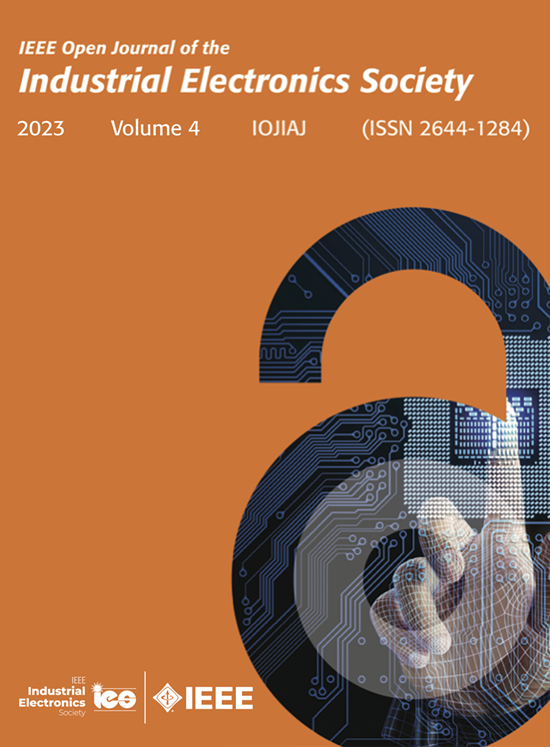Integrating FPGA-Based Acceleration in Industrial Motion Control System
IF 4.3
Q1 ENGINEERING, ELECTRICAL & ELECTRONIC
IEEE Open Journal of the Industrial Electronics Society
Pub Date : 2025-03-19
DOI:10.1109/OJIES.2025.3571218
引用次数: 0
Abstract
Manufacturing processes increasingly depend on advanced production machinery that must deliver high quality and large volumes. This applies to die-bonding machines as well that, especially at the time being after the years of shortage, need to meet very high standards of speed and accuracy. To achieve this, these devices are exploring the use of computer vision algorithms for automatic recognition of wafer positioning and die size. Nevertheless, these systems are typically managed by software-only solutions, which may fall short under stringent execution time requirements. A promising solution is the use of heterogeneous platforms, combining general-purpose processors with reconfigurable hardware. Such platforms offer the flexibility to handle both software tasks, which benefit from operating system support, and critical functions requiring hardware acceleration. This article presents a closed-loop implementation of a vision-based multisensor control system for an industrial application. The implementation exploits the capabilities of system on module technologies to provide flexible input/output and software execution coupled with computing acceleration for the vision algorithm on the reconfigurable field-programmable gate array (FPGA) fabric. The FPGA coprocessor has been designed leveraging the high-level synthesis technology and optimized on a dataset of 10 k realistic images to meet the industrial use case's performance, communication, and accuracy requirements. Moreover, the resulting accelerator performance and resource utilization demonstrate the possibility of reaching state-of-the-art metrics of handwritten hardware designs while allowing for higher abstraction and productivity of the design process.fpga加速在工业运动控制系统中的集成
制造过程越来越依赖于必须提供高质量和大批量的先进生产机械。这也适用于模粘机,特别是在经过多年的短缺之后,需要满足非常高的速度和精度标准。为了实现这一目标,这些设备正在探索使用计算机视觉算法来自动识别晶圆定位和芯片尺寸。然而,这些系统通常由纯软件解决方案管理,这可能无法满足严格的执行时间要求。一个很有前途的解决方案是使用异构平台,将通用处理器与可重构硬件相结合。这样的平台既可以灵活地处理得益于操作系统支持的软件任务,也可以处理需要硬件加速的关键功能。本文提出了一种工业应用的基于视觉的多传感器控制系统的闭环实现。该实现利用系统模块技术的能力,提供灵活的输入/输出和软件执行,并在可重构现场可编程门阵列(FPGA)结构上为视觉算法提供计算加速。FPGA协处理器的设计利用了高级合成技术,并在10 k逼真图像的数据集上进行了优化,以满足工业用例的性能、通信和精度要求。此外,由此产生的加速器性能和资源利用率表明,在允许设计过程的更高抽象和生产力的同时,可以达到手写硬件设计的最先进指标。
本文章由计算机程序翻译,如有差异,请以英文原文为准。
求助全文
约1分钟内获得全文
求助全文
来源期刊

IEEE Open Journal of the Industrial Electronics Society
ENGINEERING, ELECTRICAL & ELECTRONIC-
CiteScore
10.80
自引率
2.40%
发文量
33
审稿时长
12 weeks
期刊介绍:
The IEEE Open Journal of the Industrial Electronics Society is dedicated to advancing information-intensive, knowledge-based automation, and digitalization, aiming to enhance various industrial and infrastructural ecosystems including energy, mobility, health, and home/building infrastructure. Encompassing a range of techniques leveraging data and information acquisition, analysis, manipulation, and distribution, the journal strives to achieve greater flexibility, efficiency, effectiveness, reliability, and security within digitalized and networked environments.
Our scope provides a platform for discourse and dissemination of the latest developments in numerous research and innovation areas. These include electrical components and systems, smart grids, industrial cyber-physical systems, motion control, robotics and mechatronics, sensors and actuators, factory and building communication and automation, industrial digitalization, flexible and reconfigurable manufacturing, assistant systems, industrial applications of artificial intelligence and data science, as well as the implementation of machine learning, artificial neural networks, and fuzzy logic. Additionally, we explore human factors in digitalized and networked ecosystems. Join us in exploring and shaping the future of industrial electronics and digitalization.
 求助内容:
求助内容: 应助结果提醒方式:
应助结果提醒方式:


